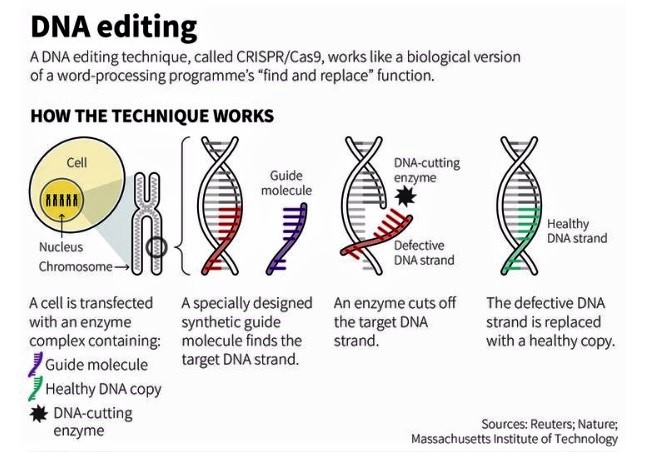Why in news?
The European Court of Justice recently ruled that organisms obtained by mutagenesis are also GMOs within the meaning of the GMO Directive.
What is the ruling?
- The guidelines on genetically modified organisms (GMOs) will apply to plants bred using gene editing technology (mutagenesis).
- The techniques of mutagenesis should alter the genetic material of an organism in a way that does not occur naturally.
- These organisms will come, in principle, within the scope of the GMO Directive.
- They are subject to the obligations laid down by that directive.
- The ruling, however, leaves out other mutagenesis techniques like irradiation.
- It's because these have a proven track record and need not be considered under the same bracket.
What is gene editing?
- Genetic modification involves the introduction of foreign DNA into an organism.
- On the other hand, gene editing involves editing of the organism’s native genome.
- CRISPR (Clustered Regularly Interspaced Short Palindromic Repeats) is a gene editing technology.
- CRISPR was talked about recently for its successful use in human embryos.
- This is done by introducing a protein (Cas9) containing the code of a defective gene.
- The protein then seeks out parts of the defective DNA that match this code.
- It then attaches itself to it, cuts it out, and then the DNA is allowed to repair itself by getting rid of the defect.

What are the benefits?
- Along with GMOs, gene-edited crops are considered to play an important role in increasing productivity.
- With gene editing, under appropriate regulations and policy, product development would be faster.
- It can be used to tackle specific traits by creating mutations.
- It is hoped that gene editing technologies would find wider acceptance than GM which faced opposition.
- As, gene editing does not involve introducing a foreign element into the plant’s genetic code.
- Concerns - Questions over the efficiency of gene editing and its potential to disrupt the natural order exist.
- Also, the new ruling will affect research, with over 14,000 papers on gene editing having been published in 2017 alone.
What is the case with India?
- Indian experience with gene editing technology is mainly confined to research and not the field.
- Today India does not have any regulations on CRISPR as it does on GMO crops.
- But the Department of Biotechnology and Indian Council of Agricultural Research are in talks in this regard.
- There are demands from various sides for regulation on gene editing, for bio-safety.
- There is a need for a regulatory framework that does not take long processes for approval.
- India, instead of following the EU model of regulation, should take up models followed in the US, Australia and Canada.
- As, regulation has traditionally been stricter in Europe than in the US and Canada.
Source: Indian Express
